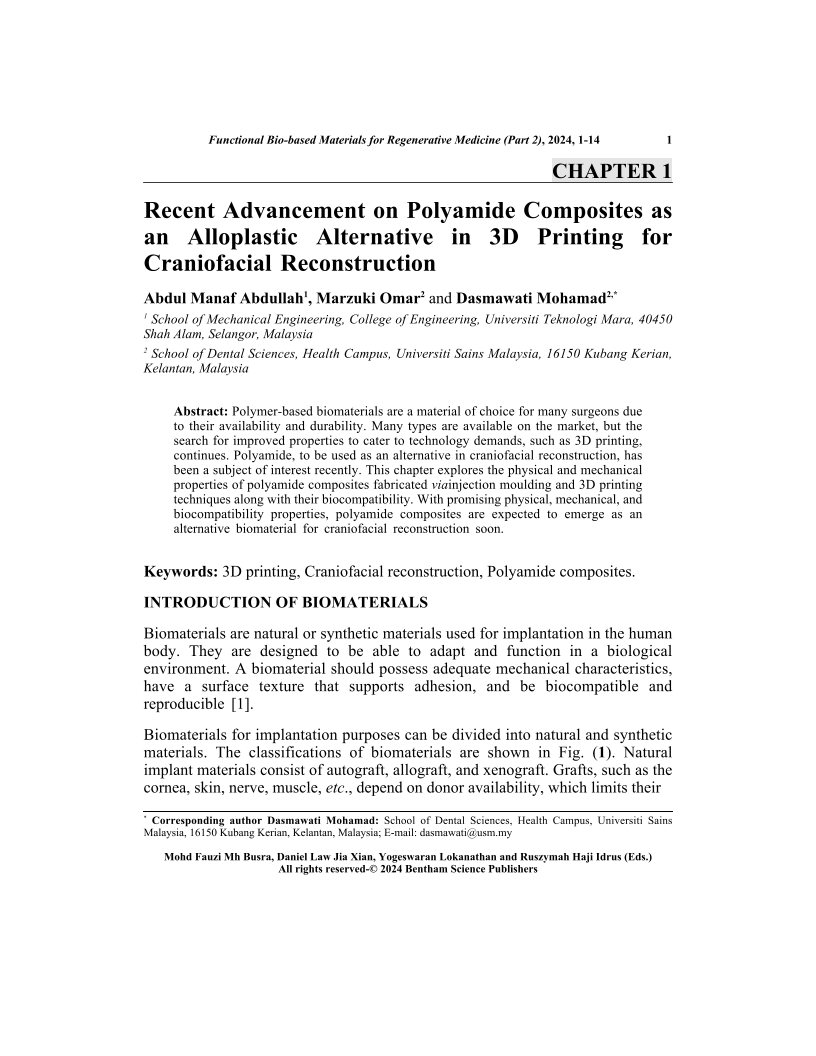Recent Advancement on Polyamide Composites as an Alloplastic Alternative in 3D Printing for Craniofacial Reconstruction

- Authors: Abdul Manaf Abdullah1, Marzuki Omar2, Dasmawati Mohamad3
-
View Affiliations Hide Affiliations1 School of Mechanical Engineering, College of Engineering, Universiti Teknologi Mara, 40450 Shah Alam, Selangor, Malaysia 2 School of Dental Sciences, Health Campus, Universiti Sains Malaysia, 16150 Kubang Kerian, Kelantan, Malaysia 3 School of Dental Sciences, Health Campus, Universiti Sains Malaysia, 16150 Kubang Kerian, Kelantan, Malaysia
- Source: Functional Bio-based Materials for Regenerative Medicine: From Bench to Bedside (Part 2) , pp 1-14
- Publication Date: February 2024
- Language: English
Recent Advancement on Polyamide Composites as an Alloplastic Alternative in 3D Printing for Craniofacial Reconstruction, Page 1 of 1
< Previous page | Next page > /docserver/preview/fulltext/9789815179330/chapter-1-1.gif
Polymer-based biomaterials are a material of choice for many surgeons due to their availability and durability. Many types are available on the market, but the search for improved properties to cater to technology demands, such as 3D printing, continues. Polyamide, to be used as an alternative in craniofacial reconstruction, has been a subject of interest recently. This chapter explores the physical and mechanical properties of polyamide composites fabricated viainjection moulding and 3D printing techniques along with their biocompatibility. With promising physical, mechanical, and biocompatibility properties, polyamide composites are expected to emerge as an alternative biomaterial for craniofacial reconstruction soon.
-
From This Site
/content/books/9789815179330.chapter-1dcterms_subject,pub_keyword-contentType:Journal -contentType:Figure -contentType:Table -contentType:SupplementaryData105

